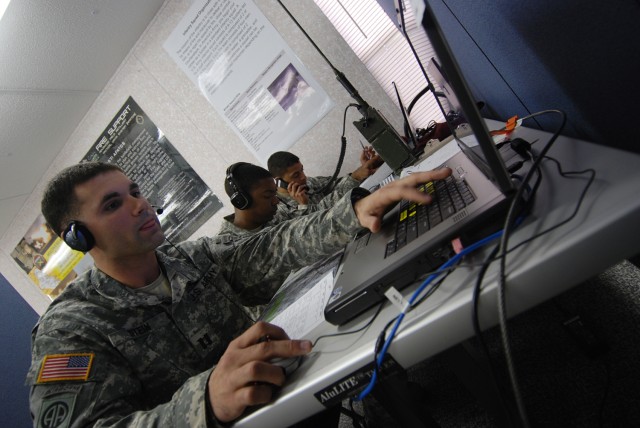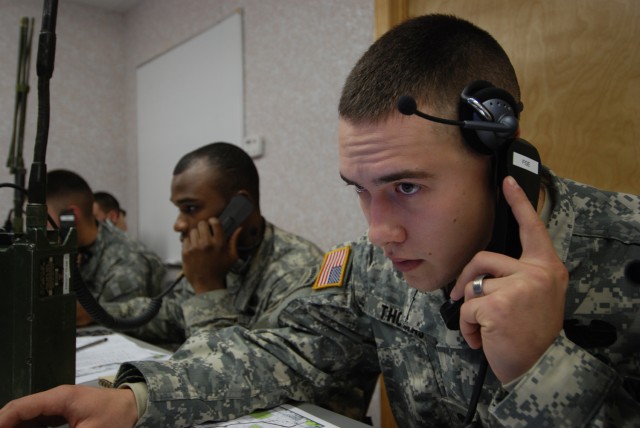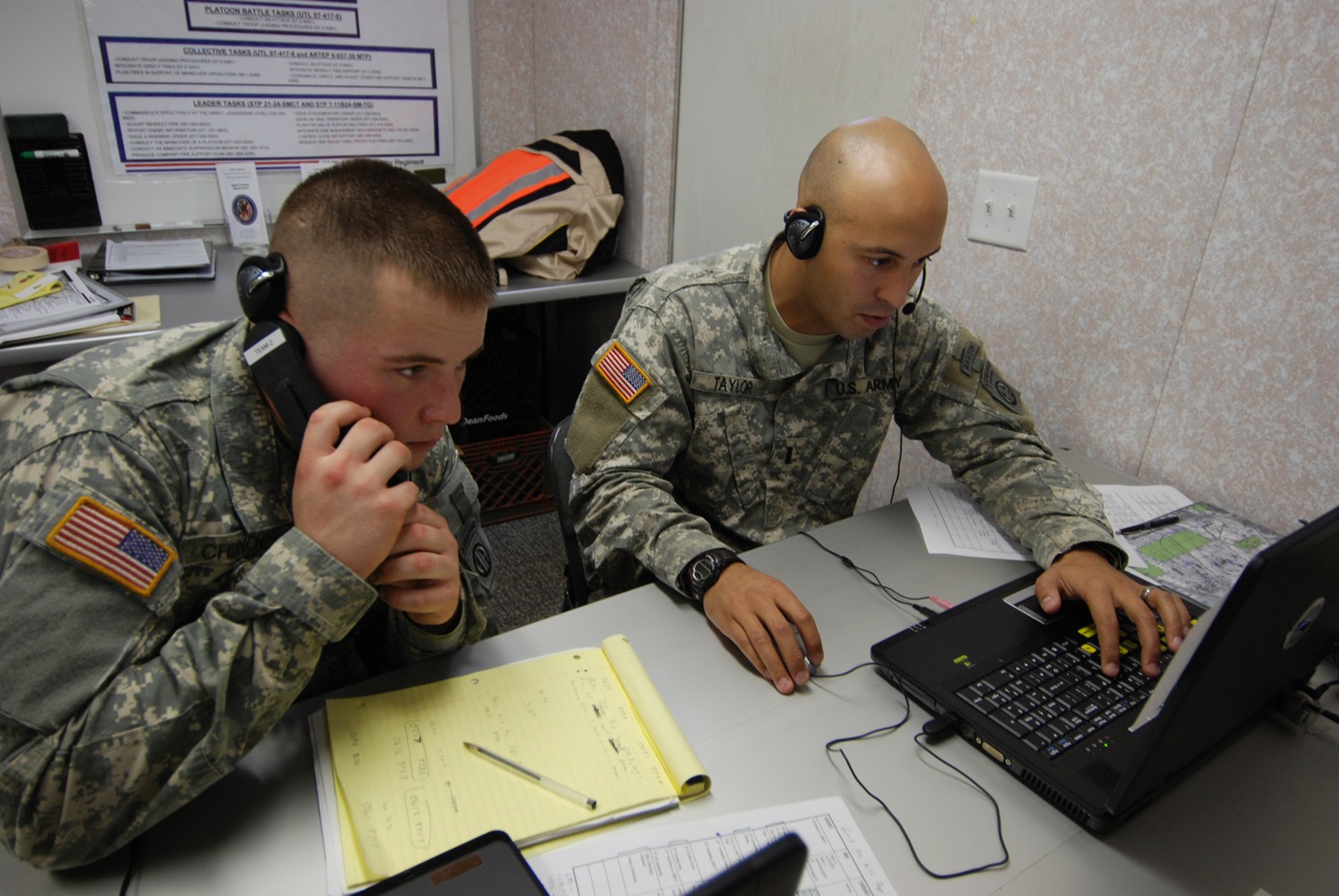Fort Bragg, N.C. - Everything was going according to plan for 1st Lt. Chad Taylor. Only half an hour into the operation, Taylor and his forward observer had already occupied an observation post near their objective and called in an artillery strike on some enemy tanks.
Feeling confident, Taylor, a platoon leader with the 82nd Airborne Division's 2nd Brigade Combat Team, decided creep out of his OP for a closer look.
And that's when a mortar round blew him up.
On a real battlefield, Taylor would have been dead. Fortunately, he wasn't on a real battlefield. His mission was taking place in a simulated virtual environment, and the only thing wounded was his pride.
Taylor was taking part in the 2nd BCT's first-ever virtual Joint Fire Coordination Exercise. The weeklong training exercise held Jan. 12 - 15 at the Fort Bragg Battle Command Training Center was a unique opportunity for company commanders, fire support officers, platoon leaders and forward observers from across the 2nd Brigade to practice integrating fire support assets into their operations without having to fire a single real round.
As in a traditional Joint Fire Coordination Exercise, the exercise began with the receipt of a mission. Each company commander was given an order to attack an enemy objective, and each had to develop a scheme of maneuver and a plan for fires to support it. The difference during the virtual JFCX was that, instead heading out to the mud and cold of the Fort Bragg woods to execute their plan, the commanders controlled virtual forces that fought it out on computer screens.
The idea was to provide leaders with the same training benefits they would get from the real thing without the problems that often accompany live fire exercises.
"They get to learn some hard lessons at no cost and at no risk to the troops," said Chief Warrant Officer Chad Cavender, the brigade targeting officer, who helped develop the virtual JFCX program.
The training utilized a specially-created software system to allow company commanders and fire support team members the ability to call in joint fires and observe their effects on a simulated battlefield. Each participant was represented in the program by a character whose actions and movements they controlled. The effect was like playing a highly realistic first-person shooter video game.
"It's like playing 'Call of Duty'," joked Taylor.
The program was actually built using design elements of a separate simulator system made to train Soldiers on convoy operations. Like musicians crafting a new song off an old sample, Cavender and Maj. Joe Bookard, the Brigade Fire Support Officer, tweaked the system to give it a new purpose.
"Based on what we wanted, [the game designers] went out and found some of those capabilities and imported them into the system," Cavender said.
The result was a simulator that allows users to integrate artillery, mortars, attack aviation, and other joint fire assets into their maneuvers as well as Intelligence, Surveillance, and Reconnaissance (ISR) assets like Unmanned Aerial Vehicles.
Capt. Kevin Stein, of Company D, 1st Battalion, 325th Airborne Infantry Regiment, was one of the commanders who got some first hand experience with the new system. As his iteration began, Stein was seated in front of a computer console, a radio in his hand and a headset draped over his close-cropped hair. Stein's platoon leaders and forward observers were seated in front of similar set-ups at cubicles all across the room.
"Alright everybody, we're hot," Stein said as the exercise began.
The room filled with radio chatter. Almost immediately, Stein requested a Predator UAV to observe the enemy location. Next he asked for an Air Weapons Team to come on station and take out an enemy OP. Then he called for preparatory fires to destroy a bunker. Everything was going smoothly. And then, Stein hit a snag - he had forgotten to tell his virtual character to move forward. He was lost in the virtual woods.
"I'm not surprised, I haven't played a video game since the first Nintendo," Stein said with a laugh after the exercise was complete.
Despite a few difficulties, Stein said the virtual system was a welcome new addition to the brigade's training toolbag.
"I think it was a great opportunity to learn how to use all these assets and resources that we've never had before without having to actually have troops on the ground," he said.








Social Sharing